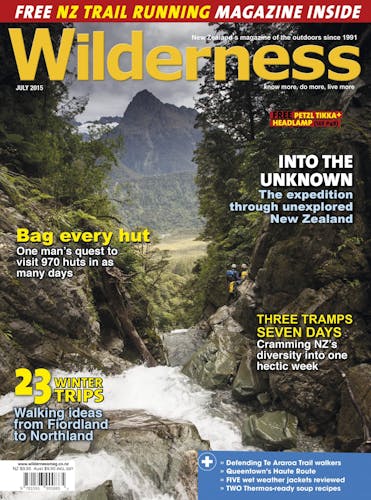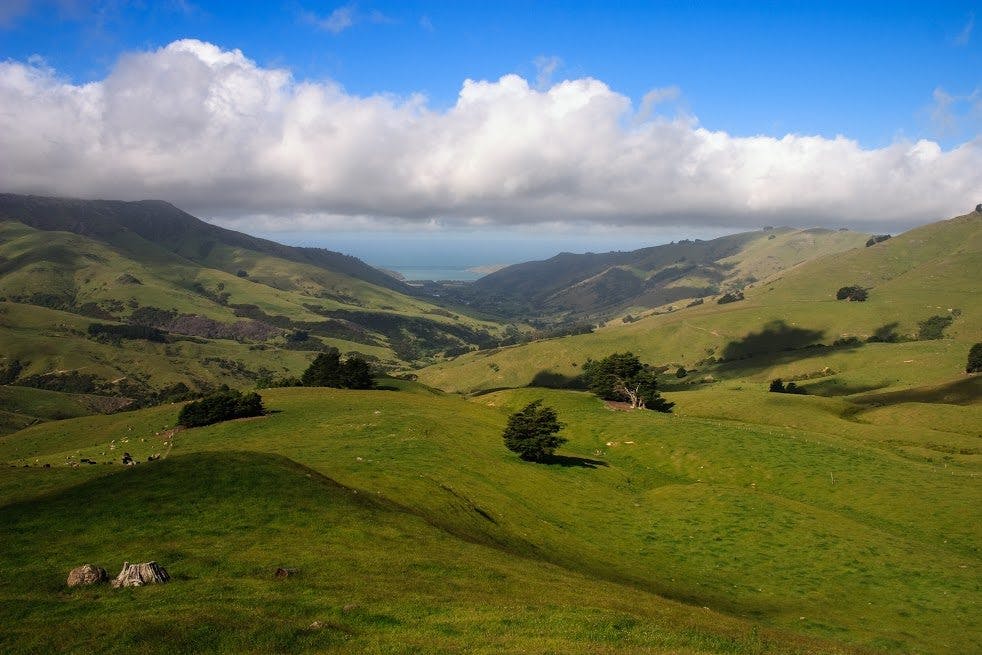There’s an excellent online mapping database that tells you where you can legally walk across New Zealand. But what if landowners refuse to acknowledge it? Matthew Pike finds out
Have you ever seen the online NZ Walking Access Commission maps? If not, take a look. They open up a new world of potential walking trips.
Layered over topo maps are heaps of places you can legally walk; not just conservation land, but crown land, public parks, areas of public access around rivers and lakes and, of course, unformed legal roads, otherwise known as paper roads.
The unformed legal roads are particularly fascinating because they were drawn up using guess work before the country had even been developed for European-style settlement and agriculture.
Planners, often based in London, tried to work out where roads would need to go in the future to make sure no farms, logging projects or towns would be cut off by private land. At this time, farms were small and land was being subdivided and roads were the only means by which they could designate any land as public access.
Subsequently, the walking access maps show hundreds of roads that cut straight through paddocks, woodland and crop fields. In reality they don’t all exist and, in many cases, the land is far too steep to ever realistically build a road.
But the website says the public has a right walk these ‘roads’, so a friend and I chose a round trip in Central Otago based on where the maps marked the unformed roads. The route was over farmland and when we arrived, we were greeted with a ‘Private – no entry’ sign. There was no-one about and we couldn’t think what to do.
“The rules are no different for unformed legal roads as they are for normal roads – the public has a right to use them,” says chief executive of the Walking Access Commission, Mark Neeson. “That’s why we don’t use the term ‘paper road’ anymore – it sounds less real than our preferred term ‘unformed legal road’.”
This means my friend and I had every right to continue past the ‘Private’ sign and follow the route as marked on the map. But Neeson warns against the idea of charging across fields with a sword and kilt while yelling ‘Freedom!’ at bemused livestock.
He says this would do nothing for relations between walkers and landowners and could cause its own problems.
“People may go ahead and exercise a right without thinking about the context they’re in,” he says. “As well as thinking about your rights, you need to also think about the needs of the landowner. It could be lambing or calving season, there may be logging and hunting taking place or a road may have been washed out.
“It’s a good idea to get advice from the landowner before you go. They may know an easier way to get to where you want to go. If search and rescue issues arise, it’s good that the landowner knows who’s in the area. If they see your vehicle there the following morning and they know you were only planning a day walk then they’ll know something’s not right.”
So while many landowners are perfectly happy for you to walk on their property (and I’ve had half-hour chats with farmers about the prettiest routes to take across their land), there will always be those who don’t want you there.
Some landowners may not know an unformed road exists on their land. Others may just refuse to acknowledge your right to be there.
In the case of my friend and I in Central Otago, we chose to walk first and ask questions later – probably not the best approach – and when the farmer realised we were there he wasn’t too pleased. When we told him we were merely following paper roads he said these roads didn’t give anyone the right to walk there.
If we had asked for permission before walking, we’re almost certain he would have said no.
So what should a walker do in a confrontation with a landowner who refuses to recognise these roads? “It’s more responsible to withdraw and diffuse the situation,” says Neeson. “There’s no need to assert rights just because you can. We’d suggest speaking to us or your local council.”
As trustee for the public interest, your local council manages the roads and can speak to landowners. The Walking Access Commission can give advice and can discuss solutions with you and the landowner. But the council is the one with legal powers and makes the final decision.
Kay Holder is regional parks team leader at Christchurch City Council, which has recently merged with Banks Peninsula District Council where there are many unformed roads: “Generally, we’ve found the best approach is to work with both landowner and walker to find a pragmatic solution,” she said. “Often, the landowner will suggest a different way that best fits with farming practice and people are generally happy to follow these routes if they’re signposted.
“It can be very frustrating for a farmer if people walk there without informing them, if they’re mustering or conducting a spray operation.
“As a council, the complaints we’ve had often concern dogs not under control or motorised vehicles causing a mess.”
As for Maori land, Neeson says walkers should treat it no differently to private land elsewhere. “Although there are different kinds of status when it comes to Maori land, we advise that you treat all Maori land the same as any other private title,” he says. “And we’d recommend speaking to the landowner or the agent before walking there.”
To take a look at public access maps where you live, visit wams.org.nz








